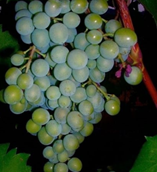Using an extract of unripe grapes as an alternative to sulphur dioxide for the wood maturation of Sangiovese wine
Results of the experiments done at Castello di Gabbiano thanks to Uva Pretiosa funding

Chemical, microbiological and sensorial characteristics of a Sangiovese wine to which was added an experimental extract of unripe grapes, produced within the project, as an alternative to sulfur dioxide during the aging in wood were evaluated.
Chemical analysis done during six months of aging showed a substantial uniformity of most of the parameters. However, starting from the third month, wines containing the extract showed a significant difference in the content of polymeric pigments, more concentrated in samples containing the extract, and free anthocyanins which was maintained until six months of aging. In the wines in which the extract was added, lactic acid bacteria populations decreased, after three months, under the detection limit similarly to the control wine. Vice versa, independently from the treatment, yeasts increased and, from the third month, in the wine with extract without chitosan, Brettanomyces bruxellensis was detected, even though at cell densities lower than 103 CFU/mL. Sensory evaluations did not reveal significant differences between wines.
The results suggest that the extract of unripe grapes both alone and with chitosan is able to maintain the color characteristics of Sangiovese wine and its sensorial quality and could contribute to an earlier color stabilization and microbiological stability in relation to bacterial populations.


